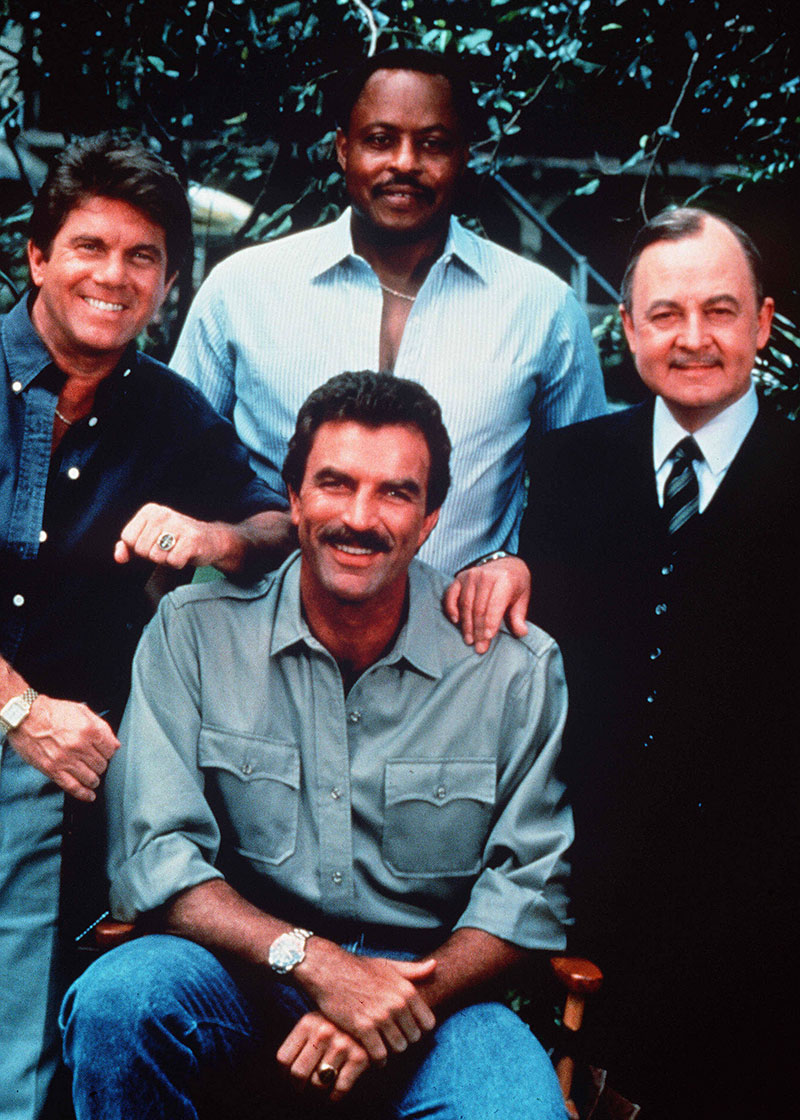Looking back at the pop culture mainstays of this Gen-Xer's gloriously misspent youth.
For an eighties kid from the Northeastern United States, whose parents drove a Chevette, and whose experience with exotic locales was mostly limited to occasional trips to tacky, mouse-themed amusement parks in Florida, Magnum, P.I. was the very definition of an aspirational television show. The long-running hit CBS series—about a handsome, funny, and sensitive Midwestern Vietnam vet turned private investigator in Hawaii named Thomas Magnum, his friends Rick (Larry Manetti) and T.C. (Roger E. Mosley) and the cantankerous but lovable scold Jonathan Higgins (John Hillerman)— was filmed on location in and around Oahu, Hawaii. As if that gorgeous, heavenly island setting wasn't enough to make me jealous, there was also the steady stream of beautiful women who regularly graced Magnum's life. Then there was Magnum's exciting profession and his insanely awesome bachelor lifestyle. Hired on by the mysterious (and never present) millionaire author Robin Masters, Magnum lived on Masters's palatial beach-front estate, along with Higgins—or "Higgy Baby" as T.C. would jokingly say.
 |
| The chemistry between these four actors was ridiculously off the charts. You believed they really did love each other. |
As strong as the wish fulfillment of Magnum's life was for me (and most everyone else who loved the show), what kept me coming back was the undeniable charm of Selleck, the wonderful supporting cast, the show's great sense of humor, and it's ability to pivot on a dime and do heavy drama as well as any show on the air at that time. One of the earliest—and still best—serial depictions of PTSD, via Magnum, Rick, and T.C.'s shared trauma over having served in the Vietnam War, it's also still one of the best sustained depictions of how deeply the war affected everyone involved. It's something the series established early, then continued to develop throughout its eight seasons. Its treatment of the veteran experience was rarely heavy handed; instead, it was usually thoughtfully portrayed. This aspect of the show will always make Magnum an important cultural touchstone in 1980s American television.
 |
| That killer opening theme song will forever be lodged in my head and I wouldn't want it any other way. |
Magnum's cases often involved helping out friends in need, or even total strangers, but in either case, Magnum gave it his all. Of course, he often roped Rick and T.C. into helping him out, usually after much verbal sparring and negotiating between the friends. Magnum famously always owed his friends money or a favor, or both, yet was usually able to sweet-talk his best buddies into helping out anyway. Much of Magnum's charm comes from Selleck's absurdly charismatic performance. Few actors and characters have ever been a more perfect match than Selleck and Magnum. They just go together like peanut and chocolate.
 |
| Magnum's frequent breaking of the fourth wall was one of the show's most enjoyable aspects. |
 |
| Selleck and those shorts set the world on fire in the early 1980s. |
| Big-name stars of the era, like Jill St. John, frequently guest-starred on the show. |
Beyond all of that, Magnum, P.I. was simply an exciting hour of television, week after week. Action, adventure, comedy, drama, intrigue, mystery, and of course all set against the backdrop of those stunningly beautiful island landscapes. The show had everything going for it, and hooked me from a very young age, before I could even fully grasp just how thoughtfully it handled adult themes. Yet, like many shows of that era, it introduced me to many of these issues, and helped me understand them in ways that went beyond my years. Pop culture didn't just entertain my generation; it helped raise us. Few shows on television helped with this any better than Magnum, P.I.

Magnum P.I. was massive over here too. Reading this piece I'd probably appreciate it more now than I did then. I know I've said it many times before but I really do miss the 80s.
ReplyDeleteThe '80s were a magical time to be alive and consuming pop culture, that's for sure.
Delete